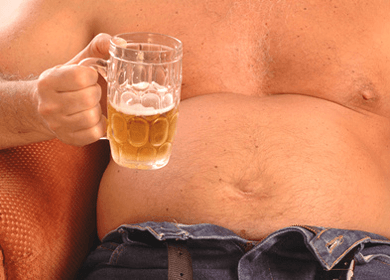
Triglycer-WHAT? Long overshadowed by LDL – the lousy cholesterol – triglycerides are easy to overlook on your latest blood-test results, but getting to know this forgotten fat could protect your ticker and save your brain. The latest: One in three Americans have higher-than-healthy triglyceride levels, a situation that can double your risk for stroke and make your chances for a heart attack six times higher than average.

One big medical group (the Endocrine Society) says, in a recent headline-making report, that adults should have this oft-overlooked fat checked every five years. Funny thing is, you’re probably doing that already! Triglycerides get tested during almost every fasting cholesterol check, and your doc should be having you do that every five years – or more frequently if your readings are high. Better advice: Pay attention to your triglyceride results, and spring into action if they’re on the high side.
The “tri” in triglycerides means there are three molecule-sized fat droplets in each artery-damaging glob. They come directly from the fats and carbs (yup, your body turns some carbs into fats) in that muffin you munched for breakfast and the chicken salad you enjoyed at lunch. Triglycerides ferry these fuels to your muscles to use for energy or to your fat cells for storage (hello, elastic-waist sweatpants!). Trouble happens when you eat too much, weigh too much, sit too much – and wind up with a triglyceride overload that boosts inflammation and messes with the silky-smooth linings of your arteries.
What can you do to tame this other blood fat? Start with these six strategies:
No. 1: Know your number. How do your triglycerides stack up? Generally accepted levels: under 100 is optimal; up to 150 is normal; 150-200 is borderline high; above that is high. We disagree and think that over 100 is too high.
 No. 2: Watch your weight. Eating 300 fewer calories a day could reduce your triglycerides by 23 percent. Losing 5 percent to 10 percent of your body weight could cut levels by 20 percent.
No. 2: Watch your weight. Eating 300 fewer calories a day could reduce your triglycerides by 23 percent. Losing 5 percent to 10 percent of your body weight could cut levels by 20 percent.
No. 3: Step up. Clipping on a pedometer and logging an extra 5,000 daily steps (about 2 1/2 miles) could slash your triglyceride level by 19 percent in just six weeks. Exercise helps by slowing down production of triglycerides in your liver.
No. 4: Fix your fats. Replacing bad fats with good fats is a proven way to lower triglycerides. So steer clear of any food that contains trans fats, full-fat dairy products and creamy salad dressings loaded with saturated fat. Skip red meat and processed meats and poultry skin. Instead, eat good fats – snack on walnuts, add avocados to your salad and drizzle olive oil on your salad greens.
No. 5: Add odd omegas to your diet. The good-for-you omega-3 fatty acids in salmon, trout, fish oil or DHA capsules have the power to lower triglycerides, too. Aim for at least two meals of fish a week and pop 900 milligrams of DHA omega-3s from algal-oil capsules daily. If your triglycerides are really high, talk with your doctor about getting 4 grams of omega-3s a day for a short while; this can slash levels by 33 percent. Then you can return to the 900 mg maintenance dose. A few animal and human studies indicate that 210 mg of purified omega-7’s can reduce high triglyceride levels without raising LDL levels.
No. 6: Feast on red and green produce. A compound called alpha-lipoic acid – found in spinach, broccoli, peas, Brussels sprouts, collard greens and chard – lowers triglycerides by up to 60 percent in lab studies. Adding plenty of fresh tomatoes to meals (why not scramble them up with your morning eggs, have tomato salad at lunch, saute with those greens for dinner) could cut levels in just six weeks thanks to disease-fighting phenols that seem to keep unhealthy blood fats in line.
Bonus: Adding pomegranate seeds to your fruit salad (they contain another odd omega, omega-5, or punicic acid) also helps cut triglycerides down to size.
– Dr. Michael Roizen & Dr. Mehmet Oz
© 2012 Michael Roizen, M.D. and Mehmet Oz, M.D. Distributed by King Features Syndicate, Inc.

